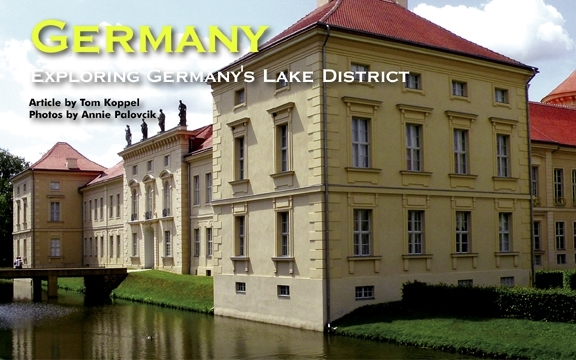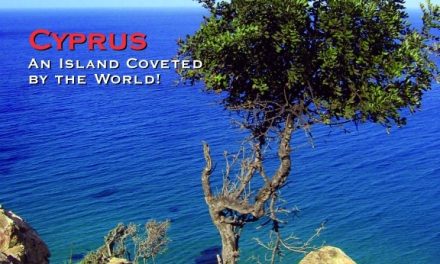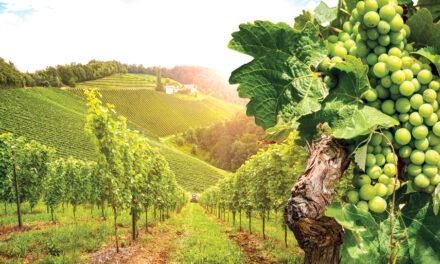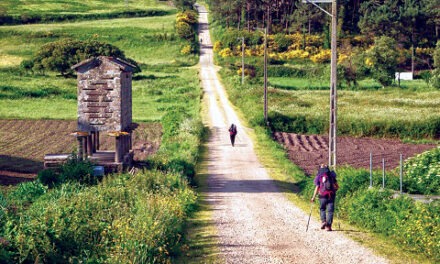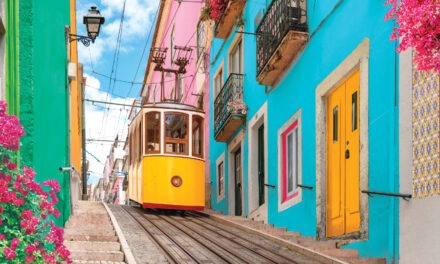Germany
Exploring Germany’s Lake District
Article by Tom Koppel
Photos by Annie Palovcik 
The captain of our cabin cruiser sings a sea chanty as he manoeuvres out of a lock and along a canal that connects two beautiful small lakes in what was once East Germany. The low shores are lined with reeds, water lilies and straight young pines. He smiles approvingly as we pass a pair of adult swans and their five fluffy chicks.
Germany’s Pristine Northern Lakes
“The water is much cleaner now,” he says. The birds-ducks, geese and swans-have made a major comeback since the end of Communism. “And there are a lot more fish.” In the old days, pollution, mainly from pig farming, flowed right into the rivers and lakes. Today, with strict regulations, the waterways and forests are among the cleanest in Europe, attracting hikers and bikers, kayakers and campers. Restaurants feature delicious local fish and game.
I had studied in divided Germany and travelled widely in the former East during those grim, grey years of the Cold War. Now my wife Annie and I are taking a close look at the changes in the two decades since the fall of the Berlin Wall and reunification of East and West. We spend ten days touring the largely rural Lake District of Brandenburg and Mecklenburg, which lies between Berlin and the Baltic Sea. We discover quiet woods, enchanting villages, and towns with stunning old architecture, a scenic region that is rapidly being revitalized but is not yet well known outside of Germany. A magnet for eco-tourism, it is still quite affordable.
Visiting an Old Friend
Our adventure begins with an hour’s train ride north from Berlin to the town of Fuerstenberg on the Havel, a meandering river that widens out frequently to create a chain of lakes. We are welcomed by Erich, an anthropologist who did major field work in Canada and has been a dear friend for over 30 years. He drives us to his lovely home facing pristine Roeblin Lake, on the outskirts of Fuerstenberg. We enjoy a brisk swim before dinner and wake in the morning to the tick-tock call of a cuckoo.
Cycling Through the Woods
Erich has bikes and kayaks, allowing us to explore. A broad paved biking trail runs through the nearby woods, linking Berlin with Denmark. Unpaved but well-marked hiking and biking trails branch off in every direction. The terrain is fairly flat, making for easy going. We peddle around the shores of two secluded lakes, where signs identify the mushrooms and local birds, to a quaint village called Neuglobsow. Its main attractions are the shops of artisan glass blowers, long a traditional craft in the region, and stylishly restored lodges with B and B rooms (“Bett und Bike”) for cyclists. (Doubles cost $70 to $80 a night, including large breakfasts.) We stop for lunch at an attractive restaurant, the Luisenhof, where a dozen other bicycles are parked. Sharing a large pork cutlet with mozzarella and tomato sauce, French fries and salad, and two steins of beer, we pay less than $ 25.
Another day, we cycle to a smaller village, Grossmenow, where Erich has friends who own an extensive forest. They sell wild deer meat, and occasionally boar, that has been hunted on their land and butchered in their abattoir. Their elegant half-timbered house is built of red brick, with heavy protruding posts and beams and a roof of flat red tiles. Now modernized, with large solar panels on the roof, it dates to the mid-nineteenth century, when the villagers worked mainly in farming, fishing, or logging. Today, most houses are summer and weekend retreats for people from Berlin.
Kayaking into Town
We kayak one afternoon along the Havel into Fuerstenberg itself, which was spared the heavy wartime bombing that destroyed larger German cities. The municipal centre is the market square and sedate Lutheran church built in an unusual neo-Byzantine style with a very tall spire. One and two story eighteenth and nineteenth century buildings line narrow cobblestone streets and quiet backwaters, where the river divides into lazily flowing channels. We paddle past well-tended back yards, with vegetable gardens, fruit trees and wooden piers, where small boats are tied up.
Lakeside Camping and Hiking Trails
Erich takes us by car an hour northeast to a huge nature reserve near the town of Feldberg, an area with steep hills and narrow deep lakes. The hills are terminal moraines, ridges of rubble left behind by Ice Age glaciers. A unique hand-cranked cable ferry, operated by a brawny guy, crosses Luzin Lake and connects to a hiking trail that winds through pines, lindens and oaks. Unlike the Havel, which has motor boat traffic, this is a fully protected area where all but electric motors are banned. A favourite place for kayaks, canoes and lakeside camping, the shores are blissfully silent, aside from the birds. The entire region abounds in spas and Wellness Centres. (Yes, they use English terms, like Wellness and Fitness. And what we call a canoe, they call a Kanadier, or literally a Canadian.)
We come upon a manicured, park-like clearing in the woods. Sculptures of two stags with impressive antlers frame the entrance to a classic century-old boutique hotel called the Hullerbusch. It features ten elegant rooms and fine dining in such an idyllic setting that we mark it as a place to stay some day.
Closer to Fuerstenberg, we go to buy organic goat cheese at the specialized dairy where it is made. A young girl is busy feeding 150 Toggenberg milking goats on oats and barley. Most of the cheese is sold at farmers’ markets in Berlin.
Relics of the Cold War
Hiking through the woods near Erich’s home reveals some fascinating history. Dozens of large villas had been built there in the 1920s by Berlin’s upper class. After the Second World War, the Soviet army established a command centre and requisitioned the houses for its top officers. Encircled by guarded checkpoints, the area was off limits to ordinary East Germans. 30,000 troops, 250 tanks, and even some short-range nuclear missiles were stationed nearby. Derelict military buildings still bespoil the forest. On one walk, we come upon a surreal crumbling statue of Lenin, half-engulfed by shrubs. When the Russians withdrew, the houses, by then in terrible condition, were sold, mainly to Berliners and West Germans. Erich and his brother bought one and had it extensively rebuilt. The colony of serene lakeside homes has once again become a highly desirable place to live within easy commuting distance of Germany’s now-reunified capital. The same is true for the rest of the Lake District. Money has been pouring in. Old houses and properties everywhere are being snapped up and restored to their former glory.
Touring by Cabin Cruiser
This becomes clear when we charter a large power boat, so we can eat on board, sleep in the luxurious main cabin, and tour the more distant lakes. Peter, our hired skipper, is a former East German navy captain and a great story teller. After the fall of Communism, he was elected mayor of a cluster of villages and started a successful business. He lets me take the wheel at times and help him to negotiate the many canal and river locks. We dock for a while at the fabulous old royal town of Rheinsberg, where the Crown Prince of Prussia (who became Frederick the Great) had his palace. The recently renovated neoclassical building, with it turrets and moats, is a splendid location for popular outdoor concerts. The entire town offers a grand display of eighteenth century architecture. There are inviting lakeside restaurants and venerable small hotels, one of them dating back to 1750.
A Meal to Remember
The next day, we cruise past Ravensbrueck, a reminder of Germany’s darkest years. It was the largest Nazi concentration camp for women and is now a museum-like memorial site. Farther along, we reach a happier destination, the village of Himmelpfort, which features the remains of an ancient cloister and a modern-day fish smoke-house and restaurant, the Seenfischerei. Along our route, we have noticed fixed nets in the shallows that are used to catch such species as char, trout, and eel. In Himmelpfort, they smoke the fish daily for takeaway sales. For restaurant patrons, they use dip nets to pull live fish out of a holding tank and grill them as soon as the orders have been taken. At an outdoor table overlooking the lake, we indulge in a large meal of both smoked and lightly broiled lake fish, garnished simply with lemon, herbs and boiled potatoes. It is exquisite. The freshest and sweetest fish we have ever eaten.
Captain Peter is waiting to take us back to Fuerstenberg. Our visit to this delightful part of Germany is winding down. But we would gladly return for the fish alone.

